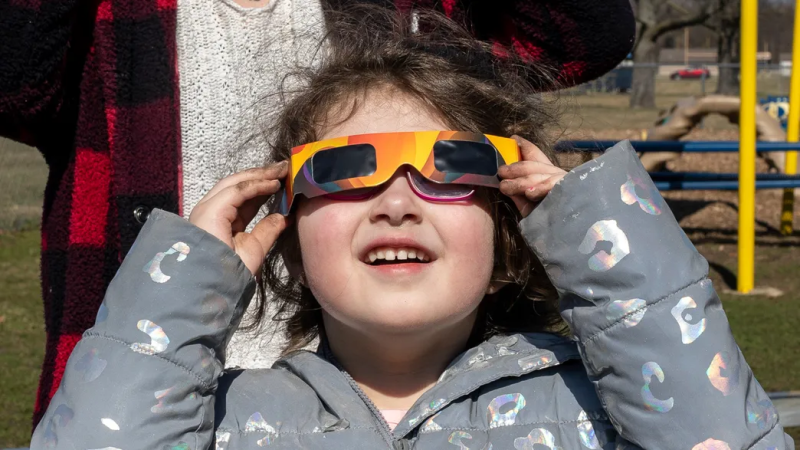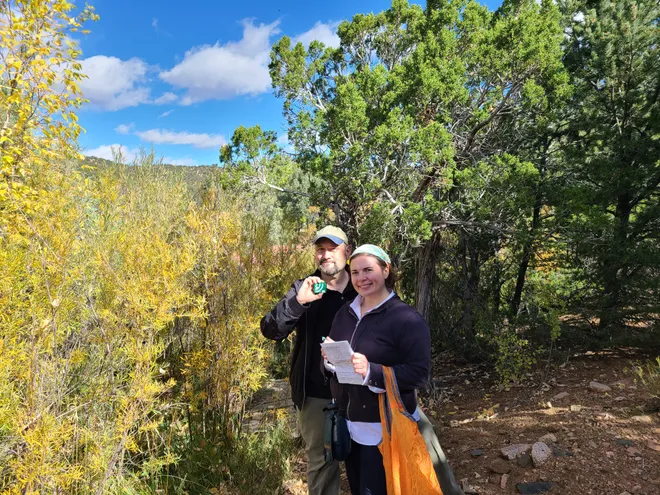Plan to watch the April 2024 total solar eclipse? Scientists need your help.
Scientists are putting out a call for people across the country to help them observe the effects of one of the largest natural wonders of the year – the total eclipse of the sun that will cover much of the United States on April 8.
People inside or near the totality can sign up to take part in at least four different projects, from watching animal behavior to photographing the sun's corona, weather permitting, to recording the soundscape of the eclipse. There are also state-level projects being organized in Indiana,Ohio and elsewhere.
Here are ways to take part in a national effort to gather information from this rare celestial event.
Watch how animals respond to the eclipse
For the 2017 solar eclipse, Adam Hartstone-Rose, a professor of biological sciences at North Carolina State University, set up an experiment to observe zoo animals as darkness fell. To their surprise, more than two-thirds of the animals exhibited changed behavior, some of it extreme.

For 2024 he's going national. The project is called SolarEclipseSafari.org. Taking part won’t interfere with the eclipse experience but will help scientists collate information about how animals react both inside the totality and in areas where there’s only partial darkness.
Volunteers will be asked to observe and report on animals near them, including pets, farm and wild animals, and record how they behave during the eclipse. Do they look towards the sky, do they group together, do they get ready for sleep or wake up?
By signing up, volunteers will get information about how to collect animal behavior data either on a phone or tablet or using printed data collection sheets.
“So far we’ve gotten over 1,000 people signed up but we’re hoping for thousands,” said Hartstone-Rose.
People can go out into nature to observe wildlife, watch their pets at home or head to local farms to observe the stock.
“I'm super keen to hear about farm animals," said Hartstone-Rose. "What will the cows, sheep and chickens do? Will roosters start crowing?”
Help NASA study the sun through photography
This one's for people who plan to photograph the eclipse with cameras on tripods.
Photographers can help NASA scientists study the Sun’s outer atmosphere – the corona – which is revealed during totality. The corona is the birthplace of the solar wind, the stream of particles and material flowing from the Sun that can impact the Earth, and the best time to observe it is during a total solar eclipse.
But the full eclipse, or totality, only lasts for four-and-a-half minutes at a maximum in any one place, which isn't long enough to watch the coronal change. NASA hopes to gather photographs from across the 90 minutes during which the Moon’s shadow crosses from Mexico to Canada.
These will then be combined into movies that will reveal otherwise difficult-to-observe activity in the corona.
You can sign up to be part of the Eclipse Megamovie here.
Listen to the sudden silence of the eclipse
One of the striking experiences of an eclipse is how animals, birds and insects fall silent as the darkness approaches. "As the moon's shadow engulfs the sun in a total solar eclipse, a unique symphony unfolds – a symphony not of sight, but of silence and surprise," is how the researchers put it.
They're asking the public to help them record what happens during the eclipse across North America, part of an effort that revisits an eclipse study from 90 years ago that showed that animals and insects are affected by solar eclipses.

The Eclipse Soundscapes project will be collecting observations and recorded sound data to help understand the impact of the 2024 solar eclipses on various U.S. ecosystems. To participate, observers will need to sign up in advance to get.
Get out your ham radio
This one's for the more than half-a-million ham radio operators in the United States.
On the ground during an eclipse darkness temperatures drop and wind patterns change but high above – 100 to 400 miles up in the ionosphere – these effects are amplified as much as a hundred times.
The NASA-funded Ham Radio Science Citizen Investigation asks ham radio operators across the country to attempt to send and receive signals to one another before, during, and after the eclipse.
Amateur radio (ham radio) bounces radio signals off the Earth’s ionosphere to communicate with other operators beyond the horizon. By measuring the strength of those signals information about the height, density and dynamics of the ionosphere can be collected.
The data collected will help assess how widespread the changes in the ionosphere are and compare the results to computer models. It's being led Nathaniel Frissell, a professor of physics and Engineering at the University of Scranton in Pennsylvania.
Disclaimer: The copyright of this article belongs to the original author. Reposting this article is solely for the purpose of information dissemination and does not constitute any investment advice. If there is any infringement, please contact us immediately. We will make corrections or deletions as necessary. Thank you.



